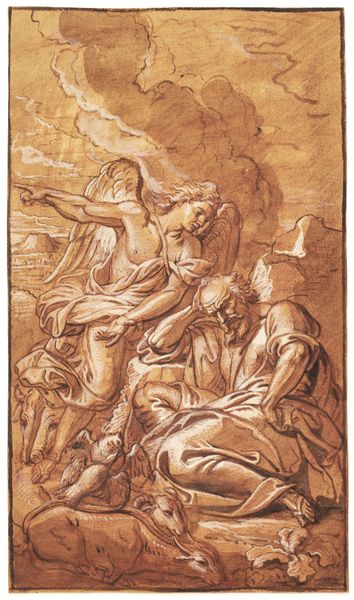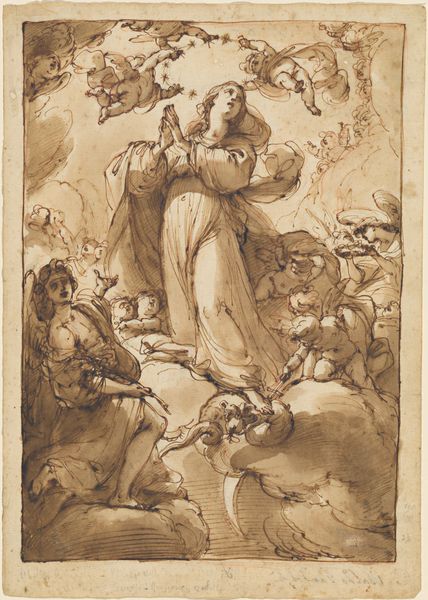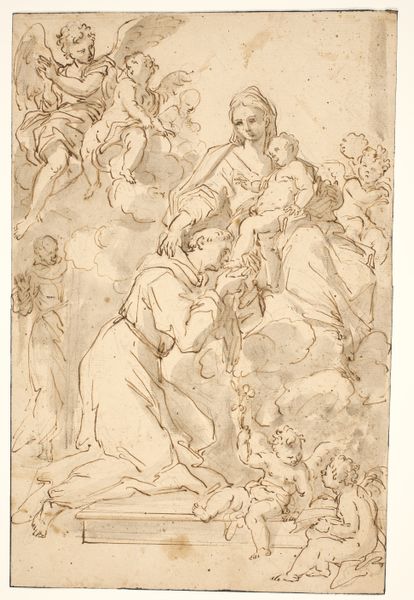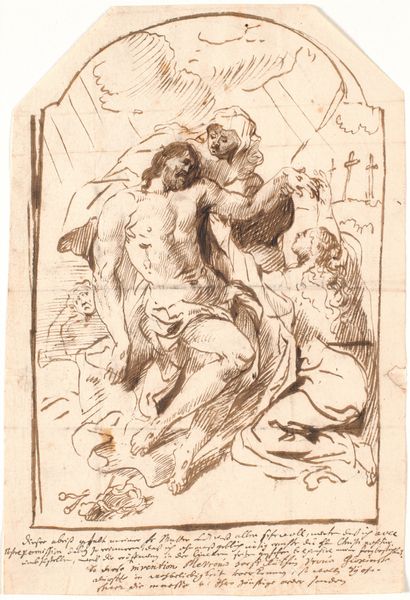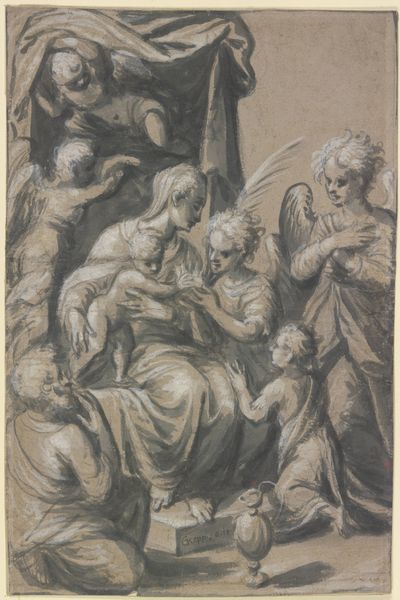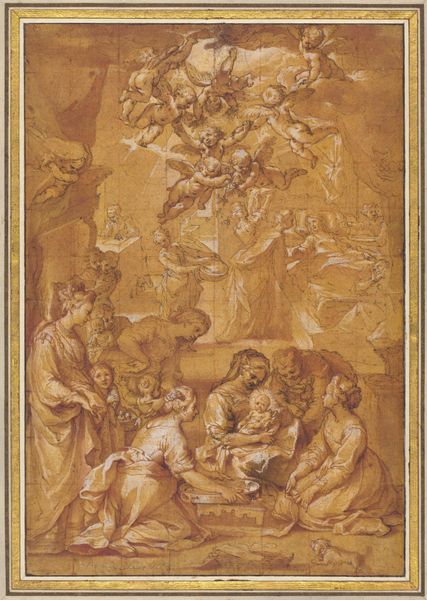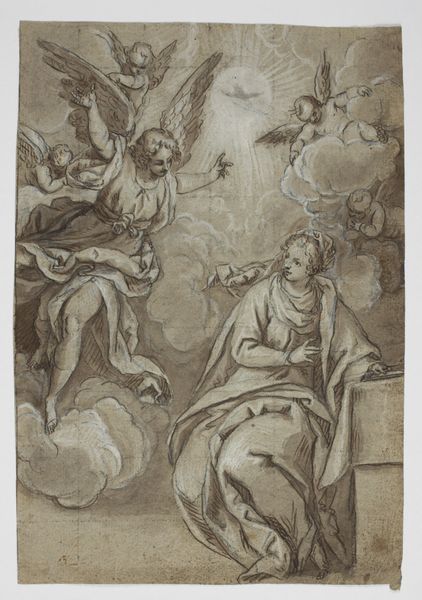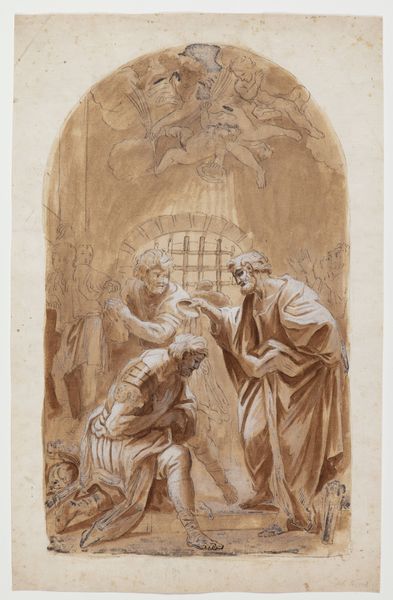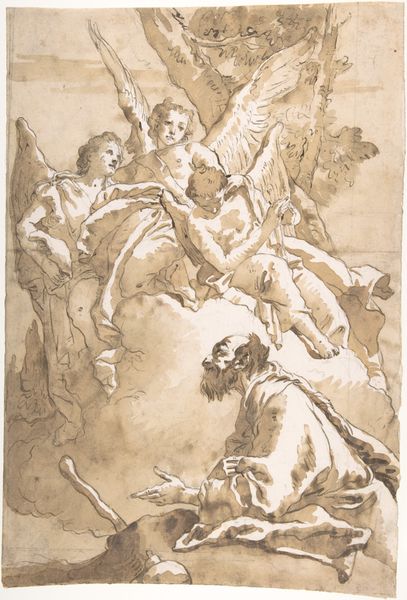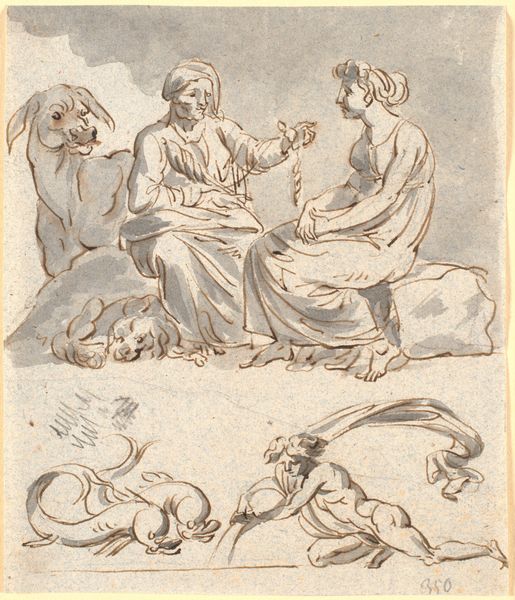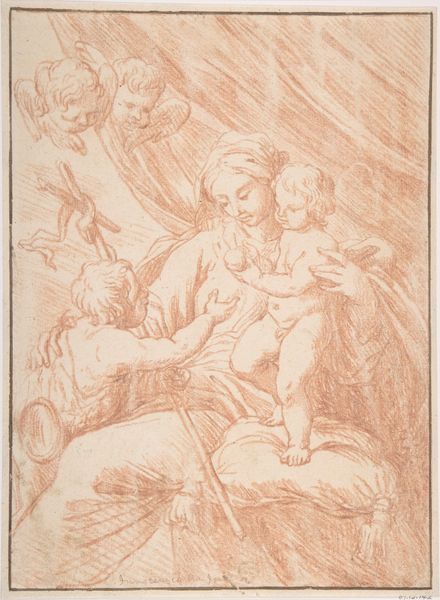
drawing, ink
#
drawing
#
baroque
#
figuration
#
ink
#
history-painting
#
watercolor
Dimensions: 186 mm (height) x 157 mm (width) (bladmaal)
Curator: Welcome. We're standing before "Jesusbarnet svævende på en sky"—"Infant Jesus Floating on a Cloud"—a Baroque drawing from circa 1641 to 1711, its creator, sadly, unknown. The piece is ink and watercolor on paper, a sepia-toned devotional scene. Editor: It feels quite ethereal. The monochromatic tones lend it an antique quality, almost faded, while the cherubic figures clustered around the infant Jesus evoke a sense of divine innocence and purity. There's a contemplative mood about it. Curator: The artist, though anonymous, clearly situated themself within established visual traditions. Consider the visual tropes: the halo around the child's head, the angels—hallmarks of religious iconography utilized throughout art history to convey holiness. It reflects the Church's powerful influence on art production. Editor: And the inclusion of the monk – possibly St. Francis due to the simple robe – really positions the Church and its devotion at the very heart of the image. There is a dialogue, both spiritual and corporeal, going on, that the artist makes accessible to the viewer. It emphasizes faith's performative nature, of being something lived, observed. Curator: Exactly. Images like these weren't simply aesthetic objects; they were didactic tools. They reinforced the doctrines of the Church, instructing viewers about faith, humility, and divine power. Consider the socioeconomic climate: literacy was limited. The artworks delivered visual narratives accessible to everyone, regardless of social standing. Editor: You're right. While from a contemporary perspective, it evokes notions of the ideal, what one *should* aspire to in their personal beliefs, I see a more coercive subtext within that narrative. I also can't help wondering how it feels viewing art so inherently linked to European imperialism. Is faith in that part of history irretrievably altered, given its brutal legacies? Curator: These are essential questions to grapple with when considering works like this. It is an entry point for discussing historical context and reception, helping visitors interpret it in all its complexities. Editor: I agree. Thanks to art and its capacity to connect us across time, this compels us to consider these issues more urgently. Curator: It does indeed; an artwork serving both faith and the crucial discourse necessary to keep history relevant in the present day.
Comments
No comments
Be the first to comment and join the conversation on the ultimate creative platform.
